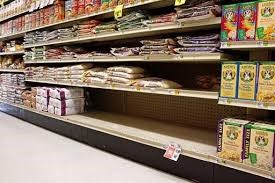Shelf-Level Collaboration Should be seen as Foundational to Omni-channel Initiatives
Omni-channel is retailing is based on providing consumers with a better shopping experience by leveraging both stores and the e-commerce channel. The idea is that a customer should be able to go to a store, see something they like, and order it for home delivery; or order the item online and pick it up at a store; etc. There are many different product flow paths that cross sales channels that are possible.
In a survey we completed last year, the top three reasons retailers are moving towards omni-channel initiatives are to increase sales (77.9%), increase market share (73.0%), and improve customer loyalty (69.7%).
Now let’s turn to shelf-level collaboration, also known as demand driven supply chain. Here the primary goal is for consumer goods companies to leverage downstream data, particularly a retailer’s point of sale data, to achieve a better in stock position on the store shelf to the benefit of both themselves and the retailer they are collaborating with.
However, one thing connects traditional shopping and new omni-channel buying paths: product availability. If the product is not available through the channel of choice, the customer may move on to another retailer that can fulfill his or her order. That means lost sales, market share, and less customer loyalty.
While many brick and mortar retailers are seeing quickly growing revenues from e-commerce, and stagnant or declining same store sales (as Walmart has been reporting in the US), traditional store retail is still the great majority of sales. Thus, shelf level collaboration between consumer goods companies and retailers should be considered foundational to omni-channel!
Most retailers recognize that an omni-channel initiative is a multiyear project. Rather than doing a big bang project and trying to enable all potential multi-channel flow paths simultaneously, they pick one or two that have the greatest ROI and focus on them initially. Ironically, most appear to be ignoring the path to product most often used by customers – i.e. go to the store, take it off the shelf, buy it, and take it home. Of all paths to the customer, this one is apt to have one of the largest ROIs.
A few years ago, ARC did a strategic report on shelf-level collaboration that examined the ROI of these projects. The average in-stock position at grocery stores was 92 percent. 98 percent in-stock was achieved across various consumer goods/retail collaborative efforts. There was substantial incremental profit improvement for non-promoted items for the consumer goods company. For promoted items, moving from 85 percent in stock to 95 percent were the improvements that we were seeing. The profit improvements for promoted items was even higher. We were looking at ROI from the consumer goods companies’ perspective, but retailers can also expect to gain substantially, particularly since the consumer goods companies were doing much of the heavy lifting around these projects.
Empty Shelves Means Lost Profits
I’m beginning to think that many retailers have put the cart before the horse. They should not abandon their omni-channel initiatives, but if they have not fixed their in stock problem at the shelf, they should fold a shelf-level collaboration project into the omni-channel initiative and prioritize that flow path appropriately.

No comments:
Post a Comment